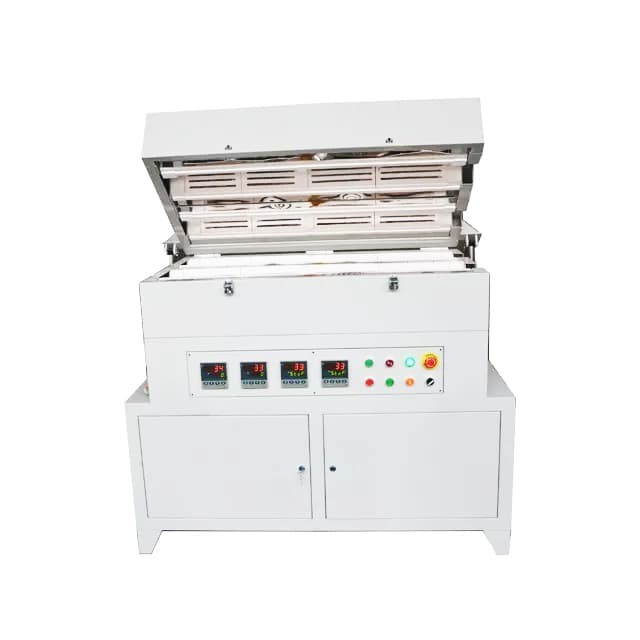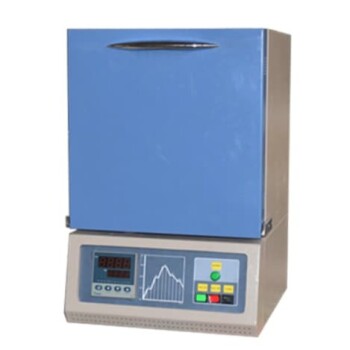Lab furnaces have been a staple in the scientific community for centuries, with the first chemists bravely experimenting with ultra-high temperatures and the flammability of various substances. Despite the advancements in technology and safety measures, ultra-high temperature is still a crucial aspect of chemistry and manufacturing today.
Furnaces have undergone significant improvements over the years, with an emphasis on efficiency and safety. As industry has progressed, the range of applications for furnaces has also expanded. In this article, we will explore the various types of lab furnaces and how they function in different high-temperature applications.
One common type of lab furnace is the box furnace, which is used for a variety of high-temperature applications such as ashing, drying, and heat treatment. These furnaces have a uniform temperature throughout the chamber and are often rectangular or square in shape. They are constructed with insulation materials to maintain consistent temperature and can be heated using electric heating elements, gas burners, or resistance heaters.
Another type of lab furnace is the muffle furnace, which is designed with a muffle or chamber that encloses the heating elements. This helps to contain heat and prevent heat loss, making muffle furnaces ideal for ashing, drying, and heat treatment applications. They are often used in conjunction with a box furnace for maximum temperature control.
Tube furnaces are another type of laboratory furnace that is used for high-temperature applications such as annealing, sintering, and heat treatment. These furnaces have a cylindrical chamber, usually made of ceramic or refractory materials, and can be heated using electric heating elements or gas burners.
In summary, lab furnaces play a vital role in various high-temperature applications in the chemical and manufacturing industries. From box and muffle furnaces to tube furnaces, these tools have evolved over the years to improve efficiency and safety.
Box and Muffle Furnaces
Box furnaces, also known as ash furnaces, are essential tools in modern research and chemistry laboratories for determining the amount of non-combustible and non-volatile material in a sample. These furnaces work by exposing the sample to high temperatures, typically up to 1,100°C, for a specific period of time. The combustible and volatile material in the sample is burned off and removed from the furnace, typically as gas, leaving only the ash material behind.
This process is commonly used for ashing procedures on coal and petroleum coke, and the furnace is typically placed in a fume hood during operation to allow for the safe venting of gas. The ash content of a sample is often important for determining the quality and composition of the material, as well as for environmental compliance.
Box furnaces are constructed with insulation materials to maintain a consistent temperature throughout the chamber, and can be heated using a variety of methods such as electric heating elements, gas burners, or resistance heaters. They are an essential tool in many laboratories, and their ability to accurately determine the ash content of materials has numerous applications in various industries.
Muffle furnaces
Muffle furnaces are a type of laboratory furnace that is used for a variety of high-temperature applications, including ashing, drying, and heat treatment. These furnaces are designed with a muffle or chamber that encloses the heating elements, which helps to contain heat and prevent heat loss. Muffle furnaces are typically used for ashing, drying, and heat treatment applications, and are often used in conjunction with a box furnace for maximum temperature control.
In addition to ashing, muffle furnaces are also used for other high-temperature applications such as sintering, annealing, and ceramic firing. They are often used in the ceramic industry to sinter ceramics at high temperatures, as well as in the metallurgy industry for heat treatment processes. Muffle furnaces are also commonly used in research labs for sample preparation and analysis.
One advantage of muffle furnaces is that they use mechanical convection to direct airflow out of an exhaust muffle, which means they do not typically need to be placed in a fume hood during operation. This makes them a convenient and safe choice for high-temperature applications in the laboratory.
Muffle furnaces are capable of reaching extremely high temperatures, with some models able to reach up to 1,800°C (3,272°F) thanks to advances in materials used for heating elements such as non-flammable molybdenum disilicide. This makes them suitable for more sophisticated metallurgical applications, as well as for fusing glass, creating enamel coatings, and soldering and brazing articles. Overall, muffle furnaces are an essential tool in many laboratories, and their versatility makes them suitable for a wide range of high-temperature applications.
Advantages of muffle furnace
There are several advantages to using a muffle furnace in the laboratory:
- High temperature capability: Muffle furnaces are capable of reaching extremely high temperatures, making them suitable for a wide range of high-temperature applications such as sintering, annealing, and heat treatment.
- Containment of heat: Muffle furnaces are designed with a muffle or chamber that encloses the heating elements, which helps to contain heat and prevent heat loss. This makes them ideal for applications where temperature uniformity is critical.
- Safety: Muffle furnaces use mechanical convection to direct airflow out of an exhaust muffle, which means they do not typically need to be placed in a fume hood during operation. This makes them a convenient and safe choice for high-temperature applications in the laboratory.
- Versatility: Muffle furnaces are versatile and can be used in a wide range of industries, including ceramics, metallurgy, and research. They are often used in conjunction with a box furnace for maximum temperature control.
- Precision temperature control: Many muffle furnaces come equipped with temperature controllers that allow for precise temperature control, making them ideal for applications where precise temperature control is critical.
Tube Furnaces
Tube furnaces are a type of laboratory furnace that are used for high-temperature applications such as annealing, sintering, and heat treatment. These furnaces have a cylindrical chamber, usually made of ceramic or refractory materials, and are heated using electric heating elements or gas burners.
Tube furnaces are often used in the synthesis and purification of inorganic compounds. They consist of a cylindrical cavity that is heated by one or more heating elements outside of the chamber, and can reach temperatures up to 1,100°C. Many tube furnaces also have one or more heating cavities that can be controlled using thermocouple feedback, allowing materials to be exposed to different temperatures for varying periods of time. This makes them suitable for transport reactions, which require multiple temperature zones within the same compartment, and for the production of crystals.
One example of a material prepared using a tube furnace is the superconductor Yttrium barium copper oxide (YBa2Cu3O7), which is a mixture of CuO, BaO, and Y2O3. This mixture is heated in a tube furnace at several hundred degrees using oxygen to achieve the desired result. Other superconductors are created using specific "recipes" that are tailored to their individual reaction characteristics and control criteria.
Advantages of Tube Furnaces
There are several advantages to using a tube furnace in the laboratory:
- High temperature capability: Tube furnaces are capable of reaching high temperatures, making them suitable for a wide range of high-temperature applications such as annealing, sintering, and heat treatment.
- Multiple temperature zones: Many tube furnaces have one or more heating cavities that can be controlled using thermocouple feedback, allowing materials to be exposed to different temperatures for varying periods of time. This makes them suitable for transport reactions and the production of crystals.
- Versatility: Tube furnaces are versatile and can be used in a wide range of industries, including research, metallurgy, and ceramics. They are often used for the synthesis and purification of inorganic compounds.
- Precision temperature control: Many tube furnaces come equipped with temperature controllers that allow for precise temperature control, making them ideal for applications where precise temperature control is critical.
- Durability: Tube furnaces are typically made of durable materials such as ceramic or refractory materials, which makes them able to withstand high temperatures and long-term use.
- Easy to operate: Tube furnaces are relatively easy to operate, with simple controls that allow users to set and maintain the desired temperature.
Related Products
- Multi-zone Laboratory Tube Furnace
- Vertical Laboratory Tube Furnace
- 1200℃ Muffle Furnace Oven for Laboratory
- 1800℃ Muffle Oven Furnace for Laboratory
- 1400℃ Laboratory High Temperature Tube Furnace with Alumina Tube
Related Articles
- The Versatility of Tube Furnaces: A Guide to Their Applications and Benefits
- Comprehensive Guide to Tube Furnaces: Types, Applications, and Considerations
- A Comprehensive Guide to Split Tube Furnaces: Applications, Features
- Installation of Tube Furnace Fitting Tee
- Exploring the Key Characteristics of Tube Heating Furnaces














